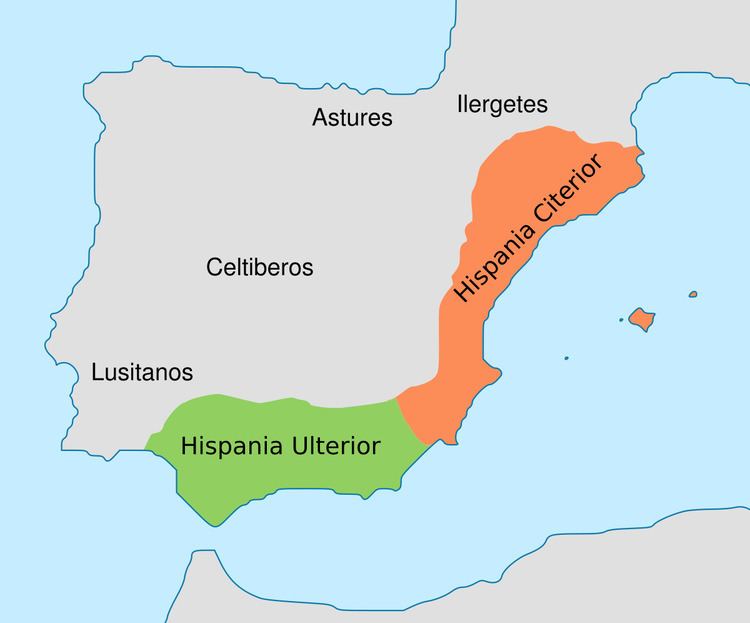Established 197 BC | Disestablished 27 AD Historical era Ancient history | |
 | ||
Hispania citerior canto ii tarraco
Hispania Citerior (English: "Hither Spain", or "Nearer Spain") was a Roman Province in Hispania during the Roman Republic. It was on the eastern coast of Spain down to the town of Cartago Nova, today's Cartagena in the autonomous community of Murcia, Spain. It roughly covered today's Spanish autonomous communities of Catalonia and Valencia. Further south there was the Roman Province of Hispania Ulterior ("Further Spain"), being further away from Rome. The two provinces were formed in 197 BC, four years after the end of the Second Punic War (218-201 BC). During this war Scipio Africanus defeated the Carthaginians at the Battle of Ilipa (near Seville) in 206 BC. This led to the Romans taking over the Carthaginian possessions in southern Spain and on the east coast up to the River Ebro. Several governors of Hispania Citerior commanded wars against the Celtiberians who lived to the west of this province. In the late first century BC Augustus reorganised the Roman provinces in Hispania and Hispania Citerior was replaced by the larger province of Hispania Tarraconensis, which included the territories the Romans had conquered in central, northern and north-western Hispania. Augustus also renamed Hispania Ulterior Hispania Baetica and created a third province, Hispania Lusitania.
